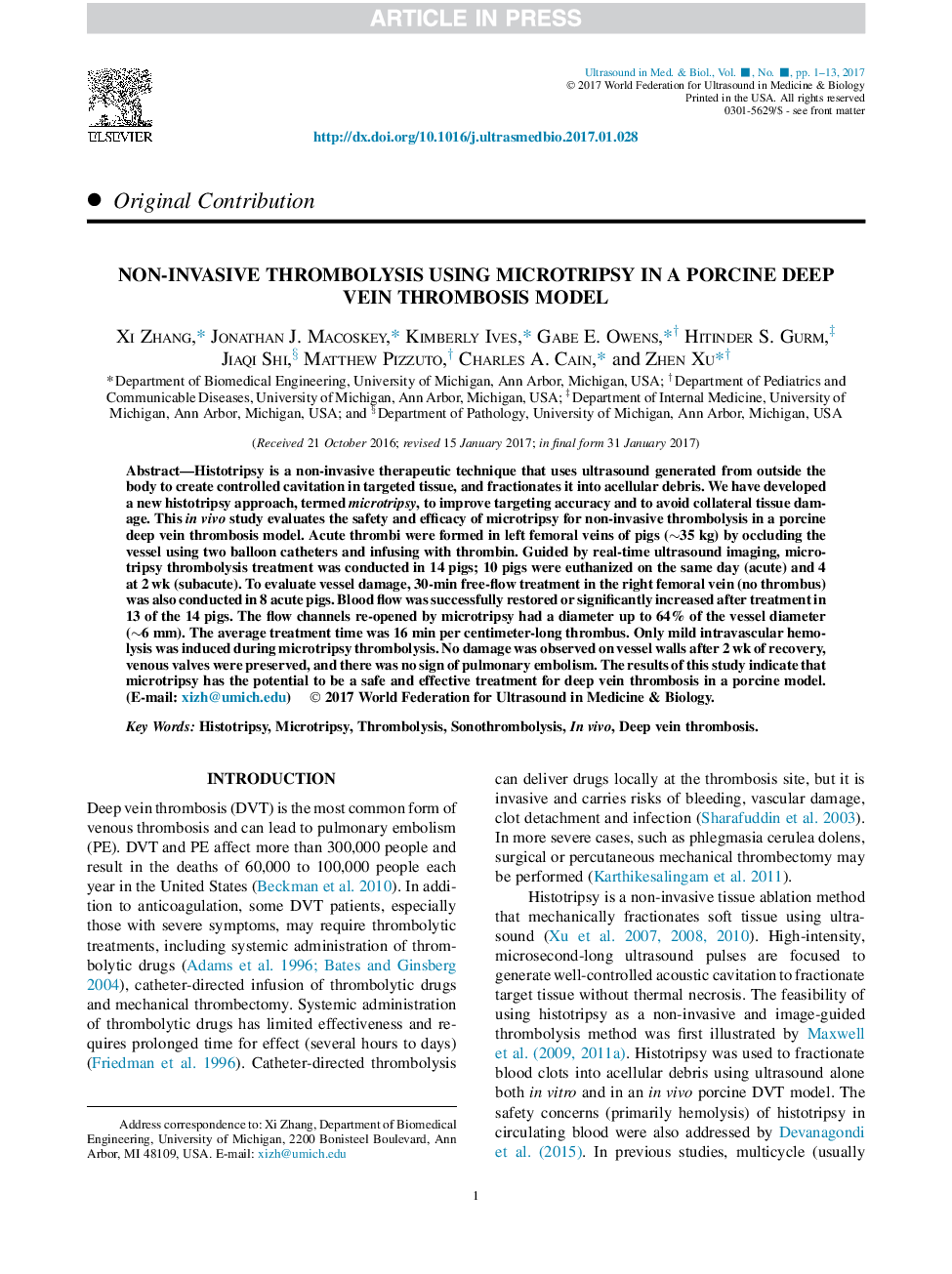| Article ID | Journal | Published Year | Pages | File Type |
|---|---|---|---|---|
| 5485644 | Ultrasound in Medicine & Biology | 2017 | 13 Pages |
Abstract
Histotripsy is a non-invasive therapeutic technique that uses ultrasound generated from outside the body to create controlled cavitation in targeted tissue, and fractionates it into acellular debris. We have developed a new histotripsy approach, termed microtripsy, to improve targeting accuracy and to avoid collateral tissue damage. This in vivo study evaluates the safety and efficacy of microtripsy for non-invasive thrombolysis in a porcine deep vein thrombosis model. Acute thrombi were formed in left femoral veins of pigs (â¼35 kg) by occluding the vessel using two balloon catheters and infusing with thrombin. Guided by real-time ultrasound imaging, microtripsy thrombolysis treatment was conducted in 14 pigs; 10 pigs were euthanized on the same day (acute) and 4 at 2 wk (subacute). To evaluate vessel damage, 30-min free-flow treatment in the right femoral vein (no thrombus) was also conducted in 8 acute pigs. Blood flow was successfully restored or significantly increased after treatment in 13 of the 14 pigs. The flow channels re-opened by microtripsy had a diameter up to 64% of the vessel diameter (â¼6 mm). The average treatment time was 16 min per centimeter-long thrombus. Only mild intravascular hemolysis was induced during microtripsy thrombolysis. No damage was observed on vessel walls after 2 wk of recovery, venous valves were preserved, and there was no sign of pulmonary embolism. The results of this study indicate that microtripsy has the potential to be a safe and effective treatment for deep vein thrombosis in a porcine model.
Related Topics
Physical Sciences and Engineering
Physics and Astronomy
Acoustics and Ultrasonics
Authors
Xi Zhang, Jonathan J. Macoskey, Kimberly Ives, Gabe E. Owens, Hitinder S. Gurm, Jiaqi Shi, Matthew Pizzuto, Charles A. Cain, Zhen Xu,
